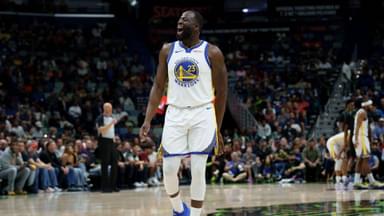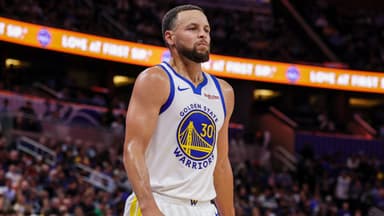On May 4, 2025, Warriors fans were among the happiest people on the planet. They’d just taken down the Rockets in a grueling 7-game series and advanced to the 2nd round of the NBA Playoffs. Two days later, as the Warriors faced the Wolves in Game 1, that happiness turned into worry. Steph Curry had exited the game in the 2nd quarter and seemed to be holding his hamstring.
Advertisement
The Warriors took care of business in Game 1, but the very next day, it was revealed that Curry suffered a Grade 1 hamstring sprain. The typical recovery timeline for such an injury is two weeks at minimum. That meant that the earliest he could return would be Game 6. Unfortunately, the Warriors could not contain Anthony Edwards and the Wolves, who won the next four to take the series.
An early elimination does have a silver lining — it gives Steph the time needed to recover properly. Curious about the long-term impact of the injury, The SportsRush spoke with Dr. Nirav Pandya, Professor of UCSF Orthopedic Surgery and Director of Sports Medicine at Benioff Children’s Hospital in California, in an exclusive interview.
Dr. Pandya, a long-time Warriors fan, explained Curry’s rehab process and what he needs to do to prevent it from becoming a recurrent issue.
“The biggest factor working in his favor is that it was reported that Curry has never suffered a hamstring injury in his NBA career before,” Dr. Pandya replied. Curry has dealt with ankle injuries, MCL sprains and a broken hand but never a hamstring injury.
According to Dr. Pandya, this being a first-time incident and Curry having a lengthy time to recover work in his favor. “The fact that it is his first one and there is no rush to return to a game anytime soon sets him up to have a decreased risk of a recurrent issue.”
Zion Williamson is a prime example of a player dealing with recurrent hamstring injuries. The 24-year-old Pelicans star has been battling them on and off for the better part of the last three seasons.
Williamson’s situation has kept him away from the court for extended periods of time because of the chronic nature of his injuries and the demands of returning to high-intensity play prematurely.
Dr. Pandya recommends athletes recovering from hamstring strains take their time getting back to the game. “A slow, gradual return to sport when his body is fully healed can take place as opposed to jumping right back into intense, playoff basketball,” he explained.
Curry’s dedication to recovery and training and the Warriors’ cautious front office put him in a great position for a successful rehab. Prioritizing complete healing and avoiding an early return to the court further minimize the chances that the hamstring injury will become a recurring issue.








